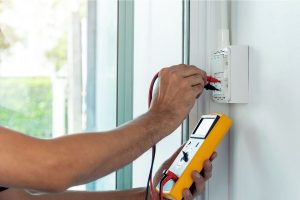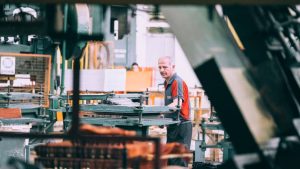Injection molding has been around since 1884 and continues to advance alongside advances in technology and materials. At its core is injecting liquid material into molds for shaping. Used across industries from plastic parts production to large automotive components assembly lines.
Innovations in injection molding have resulted in major advancements to the custom injection molding industry, including new materials, processes, and technologies that enable manufacturers to produce complex parts more precisely while decreasing waste while improving sustainability. These developments allow manufacturers to produce parts more cost-efficiently while meeting sustainability goals at once.
Overall, injection molding innovations continue to advance custom injection molding technology, offering greater flexibility, precision, and sustainability when producing plastic parts and components.
Digitalization and Industry 4.0 Integration:
- Introduction to Industry 4.0 and its Impact on injection molding
Industry 4.0 has been at the center of many technological breakthroughs within manufacturing, and injection molding is no different. Industry 4.0 refers to the integration of digital technologies into production for more connected, efficient, and responsive production lines.
- Benefits and challenges of implementing digital technologies in injection molding
Digitalization offers many benefits for injection molding operations. Real-time data can be leveraged to spot and correct minor problems quickly before they develop into major ones, cutting downtime and waste significantly.
Implementation of digital technologies in injection molding does come with its share of challenges, however. New software and monitoring systems often come with learning curves as well as resistance from operators more accustomed to traditional processes; plus, implementation costs could pose an obstacle for smaller manufacturers.
Micro-injection Molding and Miniaturization.
As electronics become smaller and more complex, there has been an increased need for micro-injection molding and miniaturization. Micro-injection molding entails creating extremely small components whose dimensions often fall into the micron range; to do this requires special machinery, materials, and operators with precision accuracy skills to do the work efficiently and precisely.
Micro-injection molding stands out among its alternatives in two key respects. First, its ability to produce highly complex parts with intricate geometries. This feature makes micro-injection molding particularly suitable for medical and electronics industries where small components with complex shapes are commonplace. Second, producing parts within tight tolerances – an indispensable ability in many applications – also stands out.
Additive Manufacturing and Injection Molding Integration.
Additive manufacturing (commonly referred to as 3D printing) has become one of the greatest technological breakthroughs of our era. While often employed alone, additive manufacturing may also be integrated with injection molding; using 3D printing technology to produce molds or inserts for use during the injection molding process.
There are multiple advantages associated with taking this approach to mold making: it can reduce cost and lead time associated with traditional molding methods while offering rapid prototyping and testing capabilities that enable early identification of issues; secondly, it enables highly complex parts production that would otherwise be difficult or impossible with traditional mold-making; lastly, it gives greater customization and flexibility during molding operations.
Sustainable Practices in Injection Molding:
Injection molding has quickly become the cornerstone of numerous industries due to its versatility and adaptability, yet its environmental footprint is becoming an increasing concern, prompting manufacturers to adopt sustainable practices in order to decrease carbon emission levels and minimize their carbon footprint. In this section, we explore some key initiatives which are revolutionizing injection molding industry practices.
- Energy efficient machinery and processes for reduced environmental impacts
One of the best ways to lower injection molding’s environmental footprint is by adopting energy-efficient machinery and processes. Energy-efficient machines use less electricity for every unit produced, leading to lower electricity bills and carbon emissions. Manufacturers can further optimize their processes by minimizing material waste, shortening cycle times, and optimizing temperature/pressure settings – an approach known as process optimization.
- Recycling and waste management strategies in injection molding
Plastic waste has become a global crisis, with millions of tons dumped into landfills and oceans each year. To minimize their environmental footprint, injection molding manufacturers are adopting recycling and waste management strategies such as recycling plastic generated during the injection molding process or closed loop systems that reuse plastic waste back in the production process reducing virgin plastic requirements for production processes.
- Eco-friendly materials and circular economy initiatives
An effective way of mitigating injection molding’s environmental footprint is adopting eco-friendly materials. Biodegradable and compostable plastics have become more and more popular due to their biodegradability; over time these break down into natural compounds which lessen plastic waste sent directly into landfills and oceans. Furthermore, manufacturers can embrace circular economy initiatives which support reuse/recycle initiatives to minimize virgin materials needed and waste produced during manufacture.
Robotics and Automation in Injection Molding
Robotics and automation have revolutionized the injection molding industry, helping manufacturers optimize their processes and increase production capacities. Robots perform tasks such as part handling, material feeding, and quality control – cutting human intervention time down significantly while decreasing error risk significantly – while automation allows greater precision and consistency during the injection molding process that produces higher-quality parts than ever before.
Conclusion
Overall, the injection molding industry is experiencing an ongoing technological revolution with numerous innovations and practices coming forth that increase efficiency and sustainability. Digital technologies, micro-injection molding, additive manufacturing, and sustainable practices have revolutionized the injection molding industry allowing manufacturers to produce top-quality parts while decreasing environmental impacts.
Robotics and automation have also revolutionized the industry, helping manufacturers optimize their processes and expand production capacity. We can expect even more innovative solutions as injection molding continues its advancement into new frontiers of production.











